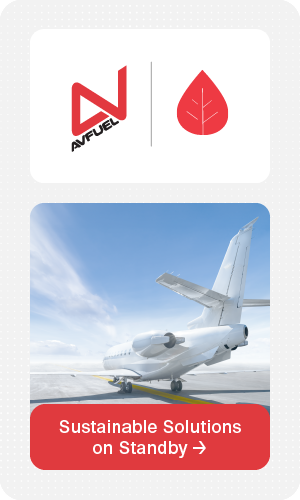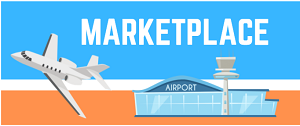On Friday, July 14, 2023, representatives from the Federal Aviation Administration’s (FAA) Special Emphasis Inspection Team (SEIT), industry representatives from the National Air Transportation Association (NATA) and National Aviation Business Association (NBAA), and members of the aviation insurance industry—including highly experienced brokers and representatives of all the major underwriters—gathered in Dallas for an aircraft dry leasing summit. The purpose was to share information and identify best practices to ensure appropriate aircraft dry leasing in the business aviation community and appropriate aircraft liability and property damage insurance coverage for those operations.
A Quick Review of Dry Leasing Basics from the Regulatory Perspective
Generally speaking, an aircraft lease is an agreement under which a lessor (usually the registered owner of the aircraft) transfers to a lessee the right to use that aircraft in exchange for some type of payment. The FAA characterizes leases as one of two kinds: either a “wet lease” or a “dry lease.”
The FAA’s federal aviation regulations (FAR) define a wet lease as the lease of an aircraft plus any one crew member (usually a pilot). While not specifically defined in the FAR, a dry lease is the inverse—the lease of an aircraft under which the lessee must obtain its own crew. The key distinction between dry and wet leases is that a proper dry lease transfers operational control of the aircraft to the lessee, while a wet lease—or a failed or “sham” dry lease—maintains operational control with the lessor.
Why is this important? The basic definition of a commercial operator is one that carries persons or property for compensation or hire. Because operational control stays with the lessor under a wet lease, that lessor is receiving compensation to carry people and is therefore a commercial operator by definition. An example of an appropriate wet lease is a charter agreement with a properly certificated air carrier conducting flights under FAR part 135 in exchange for payments made by the charter operator’s passengers.
Conversely, under a dry lease, the lessee is the operator and payment is simply for rental of the equipment, similar to renting a car from a rental car rental company. In that scenario, the person who rented the car is driving it, not the rental car company. A dry lease, however, is not automatically a non-commercial operation—you must determine whether the lessee is flying the airplane and paying for it out of pocket, or if that lessee is seeking reimbursement from others for the conduct of the flight. If the dry lessee uses the aircraft for its own business or personal use and pays for those flights out of its own pockets (which doesn’t apply to mere holding or “flight-department companies” by the way, but that’s a subject for another day), then the operation is non-commercial and the lessee can simply comply with FAR part 91. However, if the lessee receives any form of reimbursement or cost sharing in any amount from passengers, then that lessee has become a commercial operator and must comply with the rules applicable to the type of operation being conducted—usually FAR part 135.
Under this construct, SEIT continues to address situations where the parties appear to be putting a dry lease into place, but the lease is in fact a wet lease. This can occur when the lessor, either on the face of the lease or under the facts and circumstances surrounding the lease, provides one or more crew members along with the airplane (i.e., if in the eyes of the lessee the airplane and crew are a package deal.) It doesn’t matter what the parties call it, such a case is a wet lease.
Even in situations where it appears the lessee obtains its own pilots separately from the airplane, the FAA will look to other “indicia of operational control” to make sure that the lessee has in fact accepted operational control of the aircraft. Why is that important? Because there is arguably a fundamental construct to the FAR that if you are flying yourself around and paying for it out of your own pocket (and you are therefore potentially liable to the FAA—and in due course to the civil courts—if something goes wrong), then FAR part 91 is enough. But if, instead, there are passengers in the back who are contributing to the costs of the flight, and if they unaware of how the pilots were selected or if the aircraft has been properly maintained (and especially if, at the end of the day, the party who may be liable to a lawsuit is simply some holding company), then those flights should be governed by the applicable commercial rules to protect those passengers buying that transportation service.
Leasing Basics from the Aviation Insurance Industry Perspective
So, if the FAA defines a wet lease as the lease of an aircraft together with a crew member, how does the aviation insurance industry define it? Well, that’s part of the problem. Although the FAA and the aviation insurance industry frequently use the same terms, to mishmash a common George Bernard Shaw quote, it sometimes seems to be the case of a common peoples being divided by a common language. What does that mean?
The FAA is the key regulatory agency with the primary responsibility of defining and protecting both our national airspace system and all passengers who travel within it. As such, it must put into place rules—and key definitions with respect to those rules—that apply as a matter of law to everyone. But the aviation insurance industry exists for a different purpose: to allow for risk sharing (or risk shedding, depending on where you fit into the picture) arising from the conduct of those flights in our national airspace system. It does that not through promulgation of rules and definitions that apply to everyone, but in the form of insurance contracts that apply only between the insurance carrier selling the insurance and the person who bought the policy—the “insured.” However, because the insurance carrier agrees to pick up the risk (at least in the amount of coverage the insured has purchased), it is in their best interest to encourage the safest operations possible—which very much puts it in the same place as the FAA on that point.
But in approaching this goal of flight safety, the FAA’s focus is arguably on people’s actions in light of FAA definitions and regulations and whether or not those operations are conducted under the correct set of rules. The insurance industry is arguably more concerned about risk management and mitigation with respect to how a particular flight is to be conducted in light of key facts and circumstances, regardless of FAA definitions. Although there is some overlap, the two participants are coming at it from very different angles.
For example, the FAA acknowledges that there is no specific cap on the number of dry leases an aircraft owner/lessor can enter into. For each dry leasing flight, if the lessor has properly transferred operational control to a lessee that conducts the flight in full regulatory compliance, then it doesn’t matter how many leases are in place or how many extra hours a year those leases put on the airframe. From an insurance perspective, however, adding multiple dry leases to the mix means that you may be adding more pilots who must be evaluated from a qualifications and experience standpoint (which is different than simply saying the pilot is current and qualified from an FAA perspective). You are also increasing the number of flights, perhaps significantly— and therefore the number of opportunities for something to go wrong on a flight—than what might have been anticipated when the insurance policy was written.
So we end up in a situation where two key players in the industry—the regulator and the insurance provider—have the same general goal of encouraging the safe operation of aircraft and quite often use the same language when addressing this goal. But because they are coming from two different perspectives, their understandings of what that language means can lead to confusion for those in the middle: the aircraft operators and their passengers.
Purpose of the Dry Leasing Summit
The FAA has become increasingly active over the last several years in reviewing business and general aviation operations (i.e., those flying under parts 91 and/or 135) and enforcing its rules regarding legal and illegal dry leasing. It is important to note that the FAA is not trying to shut down all dry leasing, as proper dry leasing is a critical and fully appropriate tool for the use of aircraft in this aviation industry segment. But the FAA, through SEIT, has been seeking out and addressing situations of improper dry leasing to ensure the appropriate level of safety oversight.
Similarly, the insurance industry has become more aware of—and in some cases reluctant to insure—operations involving dry leasing. That’s not necessarily a bad thing. Anecdotally, however, this has led to a situation where proper dry leasing from a regulatory perspective is occurring, but dry leasing as its understood on the insurance side of the house has become shorthand for over-risky, if not dangerous, situations. Therefore, underwriters do not want to include those operations under the insurance coverage it has sold to its insureds. In a sense this can be a helpful occurrence, because it causes the parties to focus on making sure both the appropriate rules and the applicable terms of the insurance contract are being followed, which is a safer starting point for everyone. But an insurance carrier automatically defaulting to the position that most, if not all, dry leasing is bad can unfairly shut down fully appropriate use of aircraft.
The recent summit gathered all of the players—the FAA, the aviation industry participants, and the aircraft owners and operators who are in between—into one room to find the proper balance necessary to allow for safe, appropriate dry leasing. In other words, the summit was an effort to help these two common peoples actually properly use their common language.
The Results of the Summit
Heading into the event, participants realized it would not be a one-time, end-all-be-all solution to the issues surrounding the conduct and insuring consensus after the day’s successful discussion was that all participants gained a much greater understanding of the on-going issues. Only time will tell. One deliverable still in the works is an “aviation insurance underwriter’s dry leasing checklist” that can be used by the industry to better assess the risk when an insured wants to add one or more dry leases to existing coverage.
Although this project requires further dialogue amongst the participants, key fundamental questions in this checklist—designed to allow an underwriter to fully assess the risk it is being asked to undertake— might include the following:
• Who is the registered owner of the aircraft?
• Who is the named or primary insured in question?
• Has a written agreement been presented that appears to comply with the FAA’s basic requirements regarding dry leasing and the transfer of operational control?
• Have the parties (i.e., the lessor and the lessee) put into place a mechanism or otherwise addressed taking appropriate steps to confirm: • That the lessee has properly sourced the air crew;
• That the proposed pilots are fully trained and currently qualified under both the applicable regulations and the additional currency requirements that the underwriter has included in the policy in question;
• That the aircraft has been properly maintained; and
• That all applicable steps are being taken (such as confirming weather conditions, weight and balance, etc.) to ensure appropriate regulatory compliance and adequate safety.
NATA, NBAA, and aviation insurance conference participants pledged to work on creating and vetting a suitable checklist and hope to have such a planning tool available for use in the coming months.
Closing Thoughts
Both wet and dry leases are critical tools and components of our national air transportation system. But they only work safely and efficiently when all participants—regulators, insurers and operators—understand the exact details of proposed operations and ensure their proper conduct under both the applicable FAR regulations and the terms and conditions of the applicable insurance contract, a goal made more achievable by the recent summit.






